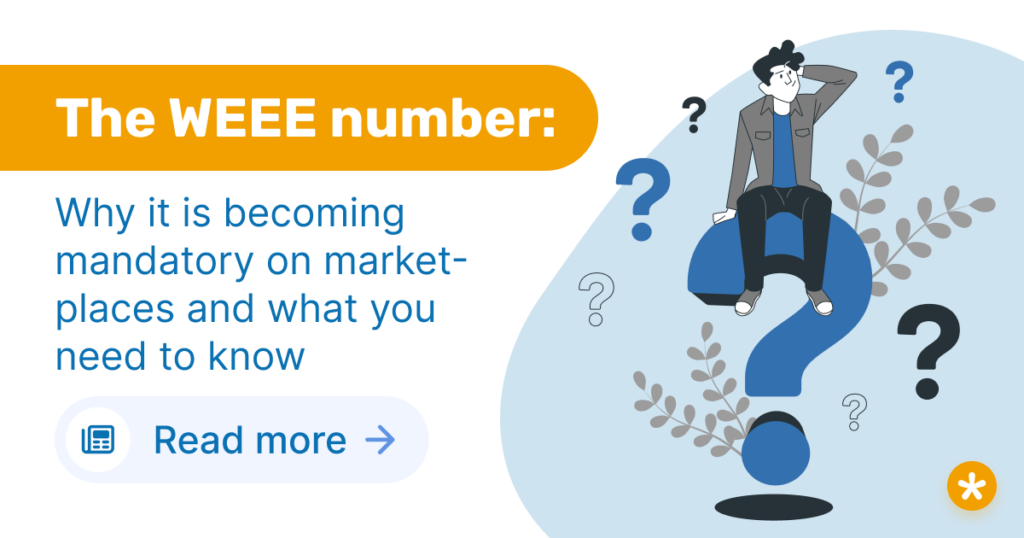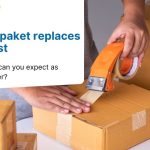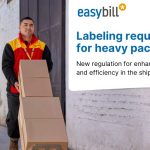
Online retailers beware! Anyone who sells electronic goods via an online marketplace such as Amazon, eBay and Co. must make an important change to the item listing as of 01.07.2023: From the beginning of July, sellers of electronic devices must provide proof that the offered goods come from a properly, in terms of ElektroG, registered manufacturer. The proof itself is not necessarily new, but the obligation to check by the marketplaces is.
Does this remind you of the sales tax registration requirement? It comes close, as even now the marketplaces are increasingly being held liable again.
How is this proof to be provided and who has to provide it at all? We have summarized everything you need to know on this topic for you in this blog.
Table of contents
Background to the new regulation
The legislator has introduced the new regulation so that it can be checked even more closely whether electronic devices are being offered for sale that, in the worst case, are not (or no longer) marketable. The new regulation is based on the EPR, the Extended Producer Responsibility. To ensure this, the seller must now provide proof. The marketplace, in turn, will be held liable for having to check this proof.
From 01.07.2023, marketplaces must check whether electrical and electronic equipment offered to sellers in your marketplace originates from a manufacturer duly registered with the foundation Elektro-Altgeräte Register (EAR). The unique control criterion for this verification is the WEEE number (Waste of Electrical and Electronic Equipment).
In order to obtain this number, a manufacturer or seller of electronic equipment must register with the EAR Foundation before circulating the equipment by offering it on the online marketplace. This applies to all devices, whether battery-operated or with a mains plug, regardless of size or nature, but which have a current flow.
Why is this regulation so important? Because it is basically a matter of making manufacturers more responsible for ensuring that the disposal of these devices is carried out in an environmentally sound and proper manner.
So, to ensure that you don’t experience a block on your product listing or any kind of sales restriction, make sure that you display your items correctly in the marketplace here.
Which goods are concerned?
Which goods are covered by this new regulation at all? It concerns electrical and electronic equipment as well as batteries and accumulators. And the registration obligation applies to anyone who
- manufactures a product that falls under the EPR regulations in the respective country
- imports a product that falls under the EPR regulations in the respective country
- sells a product covered by the EPR regulations in the respective country if he is not a resident of that country
If you only distribute the goods, but do not manufacture them yourself, you should definitely check whether there is already a WEEE number on the part of the manufacturer, which you must deposit with the article.
The WEEE number
So what exactly is the WEEE number? The WEEE number is a registration number that is assigned to a manufacturer of electronic equipment upon registration by the EAR Foundation. Basically, anyone who either manufactures electronic equipment themselves or “only” distributes it can register and receive a number.
It is important that he complies with the requirements for this certification. If, for example, you sell electrical goods online, but import them from another EU country or from a third country and cannot prove that the actual manufacturer has certification, you can take over this independently. However, all verification obligations are then transferred to you.
The WEEE number also existed before 01.07.2023. The procedure for certification is therefore not new for manufacturers and the distribution of electronic goods. Only the obligation to provide proof and the control by the marketplace is now new. For European traders this should not be a problem, but traders from third countries could now be forced into action.
How does the registration for a WEEE number work?
The regular process for registering a WEEE number will continue. As the process usually takes 8-10 weeks, you as a retailer of electronic goods have already registered in the last weeks. If not, you should now start promptly and deactivate your affected products from the marketplace listing as a precaution.
It is to be assumed, due to high penalties and the liability of the marketplace, that especially German marketplaces will implement and comply with the new requirements very strictly. Do not risk a block by the marketplace!
To register the number, proceed as follows:
- Create an account in the online portal of the EAR Foundation
- Enter all relevant registration data of the article (brand, type of device, structural as well as technical characteristics) there
- Provide existing information on the warranty performance of the device
- Also upload all the necessary documentation for the item in the online portal (e.g. a product picture)
- After about 8-10 weeks of review, you will receive feedback on your application
Special feature for merchants on Amazon
Even though the official regulation will not come into force until 1.07.2023, Amazon already advises its dealers that an entry of their own WEEE number or the WEEE number of the manufacturer of the product you sell, must be entered in the articles. This must already be done by 5.06.2023.
Amazon reserves the right to start checking all affected items from this date and to take appropriate measures if no correct WEEE number is available. Be sure to check the data of your manufacturers here, if you are only a distributor of an electrical or electronic device.
You are more the visual type? Feel free to watch our matching video on easybill TV.
Read also:
From start to sale: the ultimate checklist for setting up your Shopify store
10 steps to a successful startup: checklist for startups
Settings Upload invoices to Amazon (when using the VAT calculation service/VCS)


